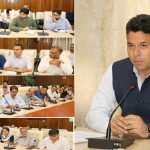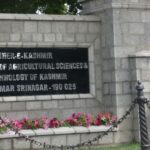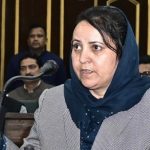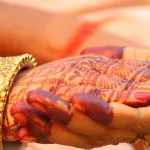The Rabab, often referred to as the soul of Kashmiri folk singing, holds a cherished place in the musical traditions of Kashmir. Its roots extend deep into the cultural soil of the region, where it has not only served as an instrument but as a symbol of the region’s rich artistic heritage. Over the centuries, the Rabab has evolved both in its form and its role within Kashmiri music, adapting to changing social, cultural, and technological influences.
The Rabab, also known as Rubab or Rebab, is believed to have originated in Afghanistan, where it has been played for over a millennium. It is considered one of the oldest string instruments in the region and has a significant presence in the music of various Central Asian and Middle Eastern cultures. The instrument gradually made its way into the Indian subcontinent through trade routes, and it became particularly prominent in the cultural landscape of Kashmir.
In Kashmir, the Rabab was embraced as an integral part of the region’s musical tradition. Its melodic sound and versatile range made it an ideal accompaniment to the various forms of folk music that flourished in the Valley. Over time, the Rabab became synonymous with Kashmiri music, deeply embedded in the region’s cultural identity.
The Role of Rabab in Kashmiri Folk Singing and Kashmiri folk music is a reflection of the region’s natural beauty, spirituality, and the lived experiences of its people. The Rabab, with its resonant and emotive sound, became the perfect complement to the lyrical and often melancholic nature of Kashmiri folk songs. It is considered the soul of Kashmiri supporting instruments in folk singing for several reasons:
The Rabab’s deep, rich tones have a unique ability to convey the emotional depth of Kashmiri folk songs. Whether it is the expression of love, loss, or devotion, the Rabab’s sound amplifies the sentiments embedded in the lyrics, making the music more impactful.
The Rabab is a versatile instrument that can accompany a wide range of musical forms, from the pastoral songs of shepherds to the spiritual hymns sung in Sufi gatherings. Its ability to adapt to different musical styles and settings has made it an indispensable part of Kashmiri folk singing.
The Rabab is more than just a musical instrument; it is a cultural symbol that represents the continuity of Kashmir’s artistic traditions. It has been passed down through generations, often played by master musicians who have dedicated their lives to preserving the region’s musical heritage.
In Kashmiri Sufi music, the Rabab holds a special place. The instrument’s sound is believed to have a spiritual quality, capable of evoking a sense of divine presence. This makes it an essential part of the musical expression in Sufi rituals and gatherings, where it is used to create an atmosphere of devotion and transcendence.
The Rabab has undergone significant changes over the centuries, both in its physical design and its role within Kashmiri music. These changes have been influenced by various factors, including technological advancements, cultural exchanges, and shifts in musical preferences.
The traditional Rabab was a relatively simple instrument made from a single piece of wood, usually mulberry or walnut, with a hollowed-out body and a parchment soundboard. It had three main strings made of gut or silk, and several sympathetic strings that resonated when the main strings were played.
In the modern era, the Rabab has seen several modifications. The materials used in its construction have diversified, with metal strings replacing gut or silk strings, and synthetic materials being used for the soundboard. These changes have altered the instrument’s sound, making it louder and more resonant, which is particularly important in contemporary performance settings.
Traditionally, the Rabab was played using a plectrum (known as ‘Zakhm’ in Kashmiri), which was held between the thumb and forefinger. The instrument was usually played in a sitting position, with the musician holding it against their chest. The playing style was often intricate, involving complex finger work to produce a wide range of tones and effects.
With the advent of new musical genres and influences, the playing technique of the Rabab has also evolved. Some musicians now use a bow to play the Rabab, similar to the way a violin is played. This technique, while not traditional, has opened up new possibilities for the instrument, allowing for a greater range of expression and adaptability to different musical styles.
Historically, the Rabab was primarily an accompanying instrument in Kashmiri folk music, used to support the main melody sung by the vocalist. It played a subordinate but essential role, providing the harmonic and rhythmic foundation for the music.
In modern Kashmiri music, the Rabab has emerged as a solo instrument in its own right. Musicians have begun to explore its full potential, using it to perform intricate solos and improvisations. The Rabab is now featured in a variety of musical genres, including classical, Sufi, and even fusion music, where it is combined with Western instruments to create new and innovative sounds.
The Rabab continues to be a vital part of Kashmiri folk music, but its role has expanded beyond traditional settings. Efforts to preserve the instrument and its music have led to the establishment of Rabab schools and institutions in Kashmir, where young musicians are trained in both traditional and modern techniques.
The Rabab’s influence has also spread beyond Kashmir, with the instrument gaining popularity in other parts of India and even internationally. Musicians from different cultures have embraced the Rabab, incorporating it into their own musical traditions and thereby contributing to the instrument’s ongoing evolution.
In contemporary Kashmiri society, the Rabab continues to hold a revered place. It is a symbol of the region’s artistic and cultural identity, representing the resilience and continuity of Kashmiri traditions in the face of changing times. However, the Rabab also faces challenges, particularly in the form of competition from modern musical instruments and electronic music.
Efforts to preserve the Rabab and its music are ongoing, with musicians, scholars, and cultural institutions working together to ensure that the instrument remains an integral part of Kashmiri culture. This includes organizing workshops, concerts, and festivals dedicated to the Rabab, as well as documenting and recording the music for future generations.
Moreover, the Rabab’s adaptability to modern musical genres has helped it stay relevant in contemporary Kashmiri society. Musicians are experimenting with new forms of music, blending traditional Rabab playing with elements of jazz, rock, and electronic music. This fusion of old and new has given the Rabab a fresh lease of life, attracting younger audiences and ensuring its continued relevance in the modern world.
The Rabab’s journey in Kashmiri music is a testament to its enduring appeal and versatility. From its origins in Central Asia to its current status as the soul of Kashmiri folk singing, the Rabab has evolved and adapted to changing times while maintaining its core essence. It is more than just a musical instrument; it is a cultural symbol that embodies the spirit of Kashmir and its people.
As the Rabab continues to evolve, it remains an essential part of Kashmiri musical traditions, connecting the past with the present and serving as a bridge between different cultures and musical genres. Its significance in Kashmiri folk singing cannot be overstated, and its ongoing evolution ensures that it will continue to play a central role in the region’s cultural landscape for generations to come.
(Author is a Columnist and can be reached at: [email protected])








